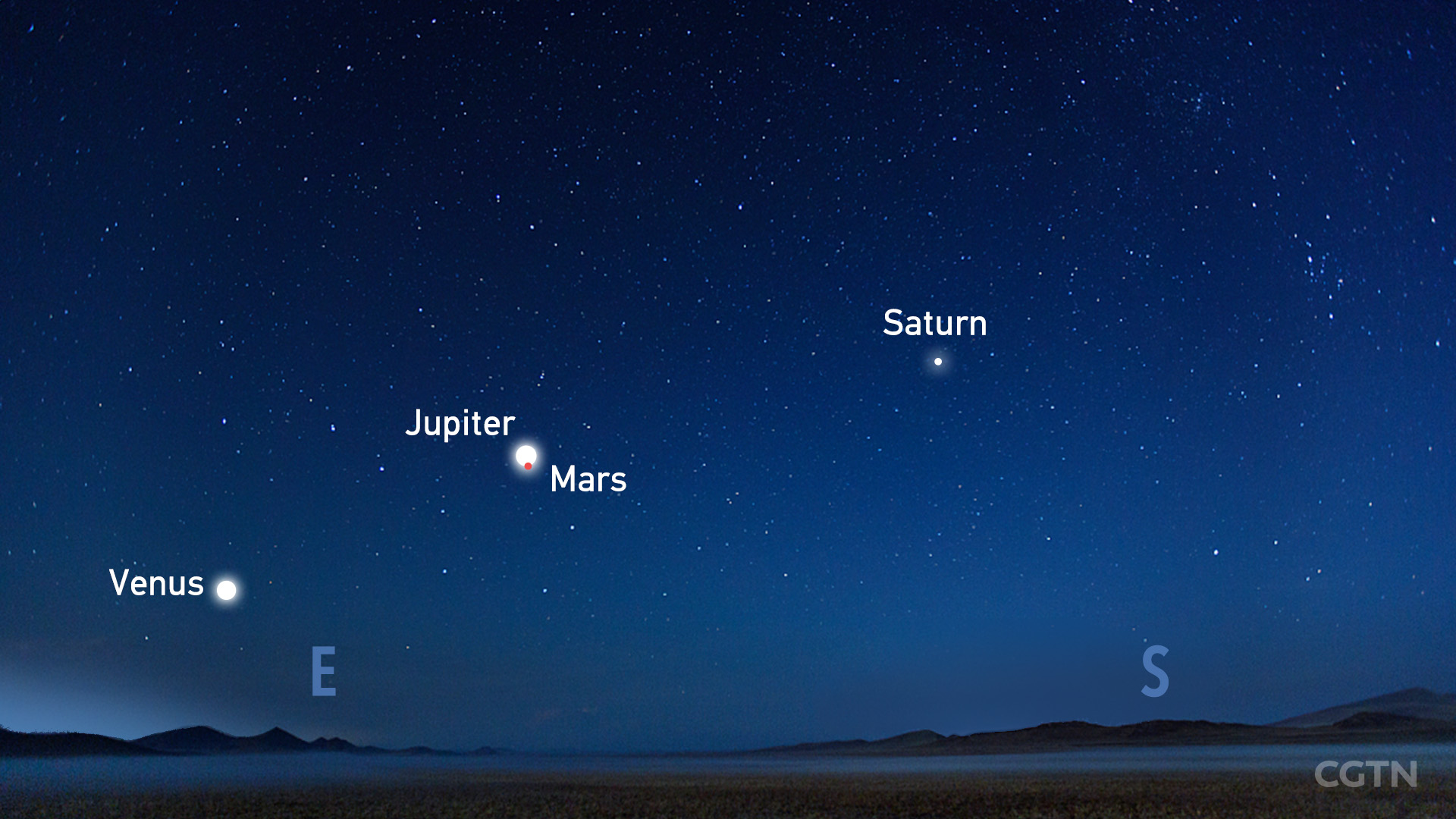
A sketch view shows how Jupiter and Mars will appear in the sky on the pre-dawn of May 29 from the Northern Hemisphere. /Graphics by Li Jingjie
A sketch view shows how Jupiter and Mars will appear in the sky on the pre-dawn of May 29 from the Northern Hemisphere. /Graphics by Li Jingjie
Mere days after a total lunar eclipse, the sky is set to host another cosmic show. Two planets, Mars and Jupiter, will appear to come closer and in conjunction on the night of May 29 for some regions.
The two planets will appear 20 degrees above the horizon in the eastern-southeastern sky, separated by no more than 0.6 degrees at conjunction peak expected at 3:57 a.m. Central Daylight Time (CDT) on May 29, according to NASA.
The angular distance between objects in the night sky is measured in degrees. For observers on the ground, the distance between the two planets will be no more than the width of a raised finger.
For people in China, however, the peak conjunction will be at 8:03 a.m. local time on May 29, and therefore not so easy to observe as the sky is brighter.
Yang Jing, a member of the Chinese Astronomical Society, said that three hours before dawn on May 29 is best for observation, with Jupiter shining at a magnitude of -2.2 and Mars at 0.7.
Magnitude value expresses the brightness of celestial bodies, of which a smaller number means brighter and more easily seen in the sky despite ambient light.
"The next early morning, Mars will appear to the lower right of Jupiter, separated by similar close degrees," Yang said.
A conjunction does not necessarily mean the celestial bodies are actually moving toward each other. Observed from Earth, the stars look like they overlap as sister planets travel around the Sun in a similar ecliptic plane.
Since late April, five of the brightest planets have been observable in the pre-dawn sky every day, and thus conjunction happens quite frequently.
On May 25, Jupiter and Mars appeared close enough to form a "happy face" with a waning moon.

Venus and Jupiter appear close in the sky with a waning moon on December 1, 2008, in Nairobi, Kenya. /Xinhua
Venus and Jupiter appear close in the sky with a waning moon on December 1, 2008, in Nairobi, Kenya. /Xinhua
People in both the Northern and Southern hemispheres can observe the phenomenon with the naked eye if the sky is clear.
"If you have a small telescope, you can catch Mars and Jupiter in the same 'frame,'" Yang said, adding observers can see the phase of Mars, Jupiter's colored cloud bands, and its three Galilean moons.

